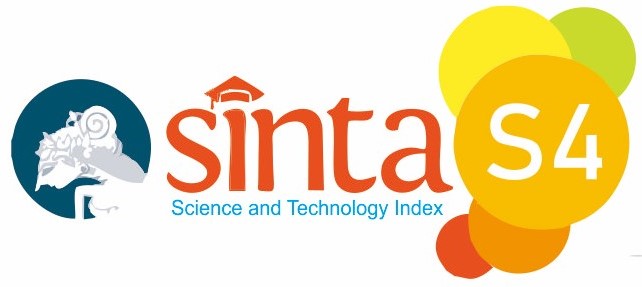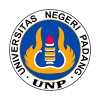PENERAPAN PEMBELAJARAN BERBASIS PROYEK DALAM MENINGKATKAN HASIL BELAJAR SISWA GAMBAR TEKNIK MANUFAKTUR
Abstract
Pembelajaran Gambar Teknik Pembuatan di SMK Negeri 5 Padang saat ini masih menggunakan metode pembelajaran konvensional, seperti ceramah dari guru. Metode konvensional ini kadang-kadang diselingi dengan sesi tanya jawab, yang membuat guru memiliki peran yang dominan pada pengajaran dan belajar berakbiat pada hasil belajar relatif rendah, dan hal ini tidak efektif bagi siswa di kelas yang menimbulkan masalah pada penerapan pembelajaran berbasis proyek, walaupun dari perspektif lain dianggap menjadi suatu alternatif yang terbaik. Model ini memberikan kesempatan untuk siswa menjadi pusat dari proses pembelajaran, mendorong kolaborasi antar siswa, dan mengaktifkan partisipasi siswa, dengan harapan dapat menaikan kemampuan siswa dan hasil belajar mereka. Penelitian ini memakai jenis penelitian tindakan kelas dengan dua siklus research dengan subjek penelitian siswa sebanyak 30 orang berasal dari Teknik Pemesinan kelas XII di SMKN 5 Padang untuk semester gasal bulan Juni–Desember tahun ajaran 2023–2024. Data dikumpulkan melalui observasi tugas proyek, penilaian latihan siswa, dan tes berupa soal pilihan ganda. Hasil penelitian mengungkapkan pelajaran berbasis proyek telah berhasil diterapkan dan mampu membangkitkan hasil belajar siswa SMK. Hasil siklus 1 memperoleh hasil belajar mencapai 72,7, dengan 18 siswa dinyatakan berhasil. Hasil siklus 1 memperoleh hasil belajar yang meningkatkan skor menjadi 82,6, dan sebanyak 26 orang siswa dinyatakan berhasil.
References
Al Aslamiyah, T., Setyosari, P., & Praherdhiono, H. (2019). Blended Learning Dan Kemandirian Belajar Mahasiswa Teknologi Pendidikan. Jurnal Kajian Teknologi Pendidikan, 2(2), 109–114. https://doi.org/10.17977/um038v2i22019p109
Bostley, M. A. (2019). Basics of research design: A guide to selecting appropriate research design. International Journal of Contemporary Applied Researches, 6(5), 76–89. https://www.researchgate.net/publication/342354309 _Basics_of_Research_Design_A_Guide_to_selecting_appropriate_research_design.
Devega, A. T., Ambiyar, A., Panyahuti, P., Adi, N. H., & Riyanda, A. R. (2022). The Effectiveness Of Learning Media On The Outcome Of Computer And Basic Network of Vocational Students. Jurnal Pendidikan Teknologi Kejuruan, 5(2), 47–52. https://doi.org/10.24036/jptk.v5i2.23123
Elfi Sukaisih. (2022). Upaya Menerapkan Model Kooperatif Tipe Decision Making Untuk Meningkatkan Kemampuan Berpikir Kritis Dan Hasil Belajar Siswa Pada Mata Pelajaran Produk Kreatif Dan Kewirausahaan Kelas XI SMK Negeri 2 Singosari Semester Genap Tahun Pelajaran 2020-2021. Jurnal Pendidik Profesional Mandiri (JPPM), 2(3), 8–16.
Eliawati, T., & Harahap, D. I. (2020). Classroom Action Research: Measuring Integration of Character Education in Language Learning. Proceedings of the 4th Annual International Seminar on Transformative Education and Educational Leadership, 384, 260–263. https://doi.org/10.2991/aisteel-19.2019.56
Fahadah, S. E., Nurika, & Lutfiya, F. (2021). Penerapan PjBL (Project Based Learning) Daring untuk Meningkatkan Hasil Belajar Siswa di Masa Pandemi Covid-19. Jurnal Profesi Keguruan, 7(2), 199–207. https://journal.unnes.ac.id/nju/index.php/jpk
Fajri, R. N., Syahril, S., & Purwantono, P. (2022). Meningkatkan Hasil Belajar Siswa Di Mata Studi Gambar Teknik Manufaktur Kelas XI TP 1 SMK N 1 Sumatera Barat Bersamaan Penerapan Model Pembelajaran Berbasis Proyek. Jurnal Vokasi Mekanika (VoMek), 4(4), 90–97. https://doi.org/10.24036/vomek.v4i4.464
González-Pérez, L. I., & Ramírez-Montoya, M. S. (2022). Components of Education 4 . 0 in 21st Century Skills Frameworks : Systematic Review. Sustainability, 14(3), 1–31.
Guan, C., Zhang, Z., Liu, S., & Gong, J. (2019). Multi-objective particle swarm optimization for multi-workshop facility layout problem. Journal of Manufacturing Systems, 53, 32–48. https://doi.org/10.1016/j.jmsy.2019.09.004
Jalinus, N., Syahril, & Nabawi, R. A. (2019). A comparison of the problem-solving skills of students in pjBL versus CPjBL model: An experimental study. Journal of Technical Education and Training, 11(1), 36–43. https://doi.org/10.30880/jtet.2019.11.01.005
Li, J., & Pilz, M. (2021). International transfer of vocational education and training: a literature review. Journal of Vocational Education and Training, 00(00), 1–34. https://doi.org/10.1080/13636820.2020.1847566
Lukmanji, A., Williams, J. V. A., Bulloch, A. G. M., & Patten, S. B. (2020). Seasonal variation in specific depressive symptoms: A population based study. Journal of Affective Disorders, 261, 153–159. https://doi.org/10.1016/j.jad.2019.10.003
Meesuk, P., Sramoon, B., & Wongrugsa, A. (2020). Classroom Action Research-based Instruction: The Sustainable Teacher Professional Development Strategy. Journal of Teacher Education for Sustainability, 22(1), 98–110. https://doi.org/10.2478/jtes-2020-0008
Pantiwati, Y., Hadi, S., Nurrohman, E., & Sari, T. N. I. (2023). Research assistance and publication of class action research results for junior high school teachers. Journal of Community Service and Empowerment, 4(1), 25–37. https://doi.org/10.22219/jcse.v4i1.24374
Prasetya, F., Fajri, B. R., Syahri, B., Ranuharja, F., Fortuna, A., & Ramadhan, A. (2021). Improved learning outcomes of CNC programming through Augmented Reality jobsheet learning media. INVOTEK: Jurnal Inovasi Vokasional Dan Teknologi, 21(3), 221–233. https://doi.org/10.24036/invotek.v21i3.957
Riska, M., & Usman, N. (2023). International Journal of Engineering Business and Social Science Training and Development of Productive Teachers in Improving Work Skills for Vocational High School ( SMK ) Level Students in Sigli. 1(06), 616–628.
Senduk, N. (2021). Penerapan Teknik Penggambaran Garis Kontur Menggunakan Auto Cad 3D. Jurnal Teknik Sipil Terapan, 3(2), 90. https://doi.org/10.47600/jtst.v3i2.281
Syahril, Purwantono, Wulansari, R. E., Nabawi, R. A., Safitri, D., & Kiong, T. T. (2022). The Effectiveness of Project-Based Learning On 4Cs Skills of Vocational Students in Higher Education. Journal of Technical Education and Training, 14(3), 29–37. https://doi.org/10.30880/jtet.2022.14.03.003
Syahril, S., Nabawi, R. A., & Safitri, D. (2021). Students’ Perceptions of the Project Based on the Potential of their Region: A Project-based Learning Implementation. Journal of Technology and Science Education, 11(2), 295–314. https://doi.org/10.3926/jotse.1153
Tumulu, S. K., & Sarkar, D. (2018). Computer-aided design, finite element analysis and material-model optimisation of knee prosthesis. Journal of the Australian Ceramic Society, 54(3), 429–438. https://doi.org/10.1007/S41779-017-0169-9/METRICS
Wankhade, M., Rao, A. C. S., & Kulkarni, C. (2022). A survey on sentiment analysis methods, applications, and challenges. In Artificial Intelligence Review (Vol. 55, Issue 7). Springer Netherlands. https://doi.org/10.1007/s10462-022-10144-1
Zulatama, A., Ambiyar, A., Sukardi, S., & Devega, A. T. (2022). Kontribusi Prestasi Belajar, Pengetahuan K3 dan Pengalaman Prakerin Siswa dengan Kesiapan Kerja Siswa SMK Kelas XII di Lahat. JTEV (Jurnal Teknik Elektro Dan Vokasional), 8(1), 96. https://doi.org/10.24036/jtev.v8i1.115785
Submitted
Copyright (c) 2024 Jurnal Vokasi Mekanika

This work is licensed under a Creative Commons Attribution 4.0 International License.








.svg_.png)


